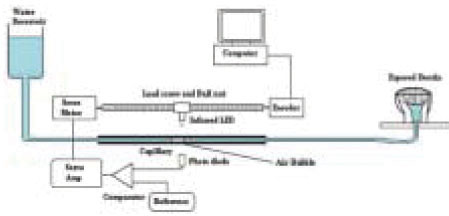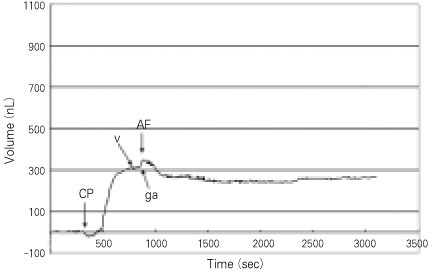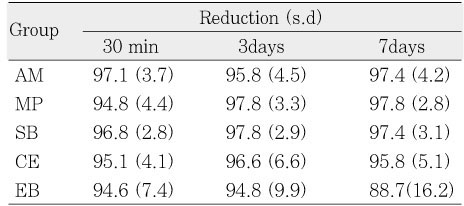Articles
- Page Path
- HOME > Restor Dent Endod > Volume 34(6); 2009 > Article
- Original Article Real-time measurement of dentinal tubular fluid flow during and after amalgam and composite restorations
- Sun-Young Kim1, Byeong-Hoon Cho1, Seung-Ho Baek1, Bum-Sun Lim2, In-Bog Lee1
-
2009;34(6):-476.
DOI: https://doi.org/10.5395/JKACD.2009.34.6.467
Published online: November 30, 2009
1Department of Conservative Dentistry, School of Dentistry, Seoul National University, Korea.
2Department of Dental Biomaterials, School of Dentistry, Seoul National University, Korea.
- Corresponding Author: In-Bog Lee. Department of Conservative Dentistry, School of Dentistry, Seoul National University, 275-1 Yeongeon-Dong, Jongno-Gu, Seoul 110-768, Korea. Tel: 82-2-2072-3953, Fax: 82-2-2072-3859, inboglee@snu.ac.kr
Copyright © 2009 The Korean Academy of Conservative Dentistry
- 780 Views
- 3 Download
- 1 Crossref
Tables & Figures
REFERENCES
Citations

- Real-time measurement of dentinal fluid flow during desensitizing agent application
Sun-Young Kim, Eun-Joo Kim, In-Bog Lee
Journal of Korean Academy of Conservative Dentistry.2010; 35(5): 313. CrossRef






Figure 1
Figure 2
Figure 3
Figure 4
Figure 5
Figure 6
The restorative materials and procedures for each group.
Abbreviation: E, acid etching for 15 sec; P, Primer application; A, Adhesive application; PA, application of mixed agent with primer and adhesive; SE, self-etching primer application; SEA, application of self-etching adhesive; LC, light-curing; RF, resin composite filling.
Flow rate reduction (%) of each group at 30 minutes, 3 days, and 7days after restoration with respect to baseline (n=10).
There was no statistically significant difference among groups for each measurement time. There was no statistically significant difference according to the measurement time for each material. s.d=standard deviation.
Abbreviation: E, acid etching for 15 sec; P, Primer application; A, Adhesive application; PA, application of mixed agent with primer and adhesive; SE, self-etching primer application; SEA, application of self-etching adhesive; LC, light-curing; RF, resin composite filling.
There was no statistically significant difference among groups for each measurement time. There was no statistically significant difference according to the measurement time for each material. s.d=standard deviation.

 KACD
KACD








 ePub Link
ePub Link Cite
Cite

